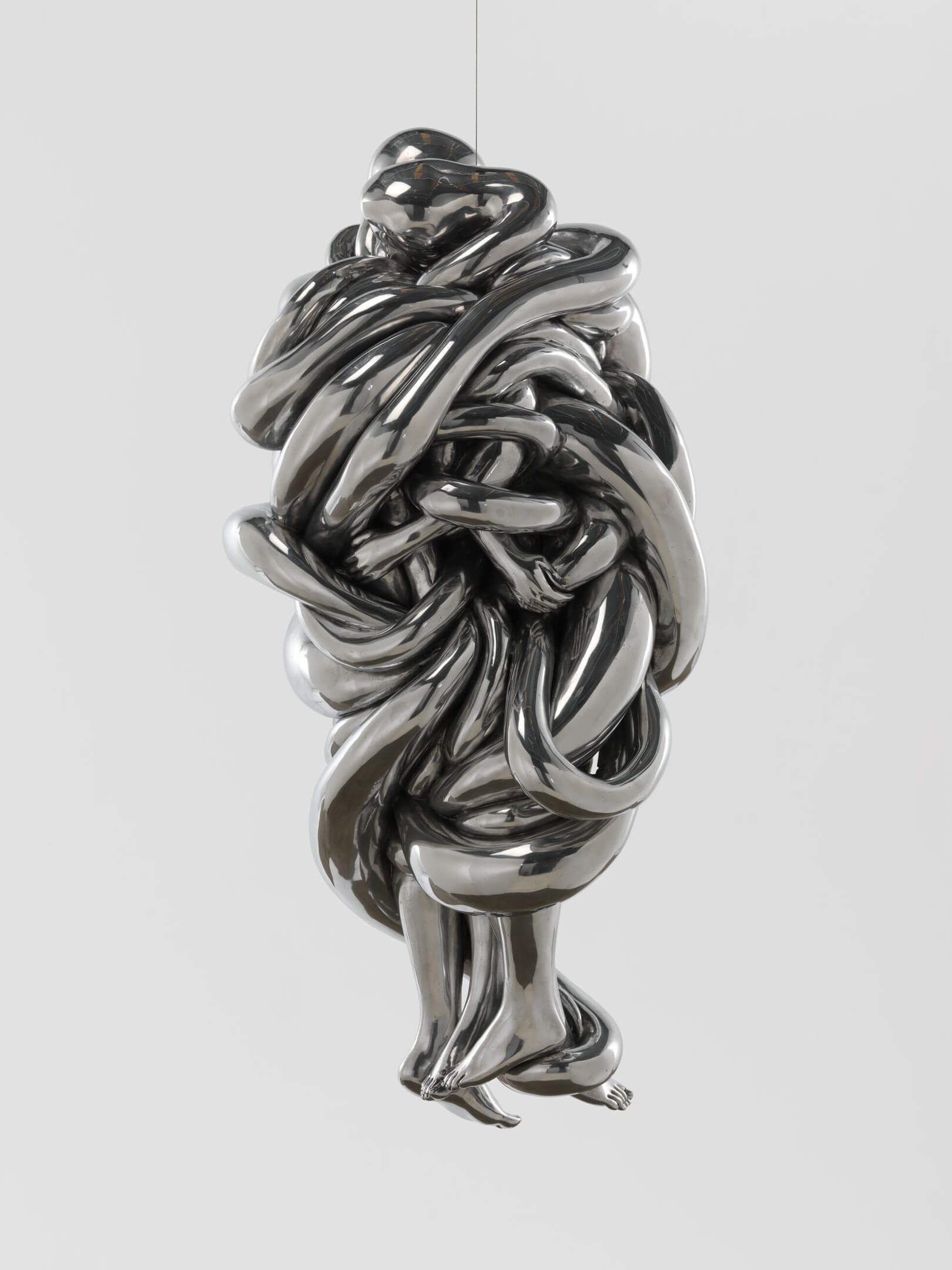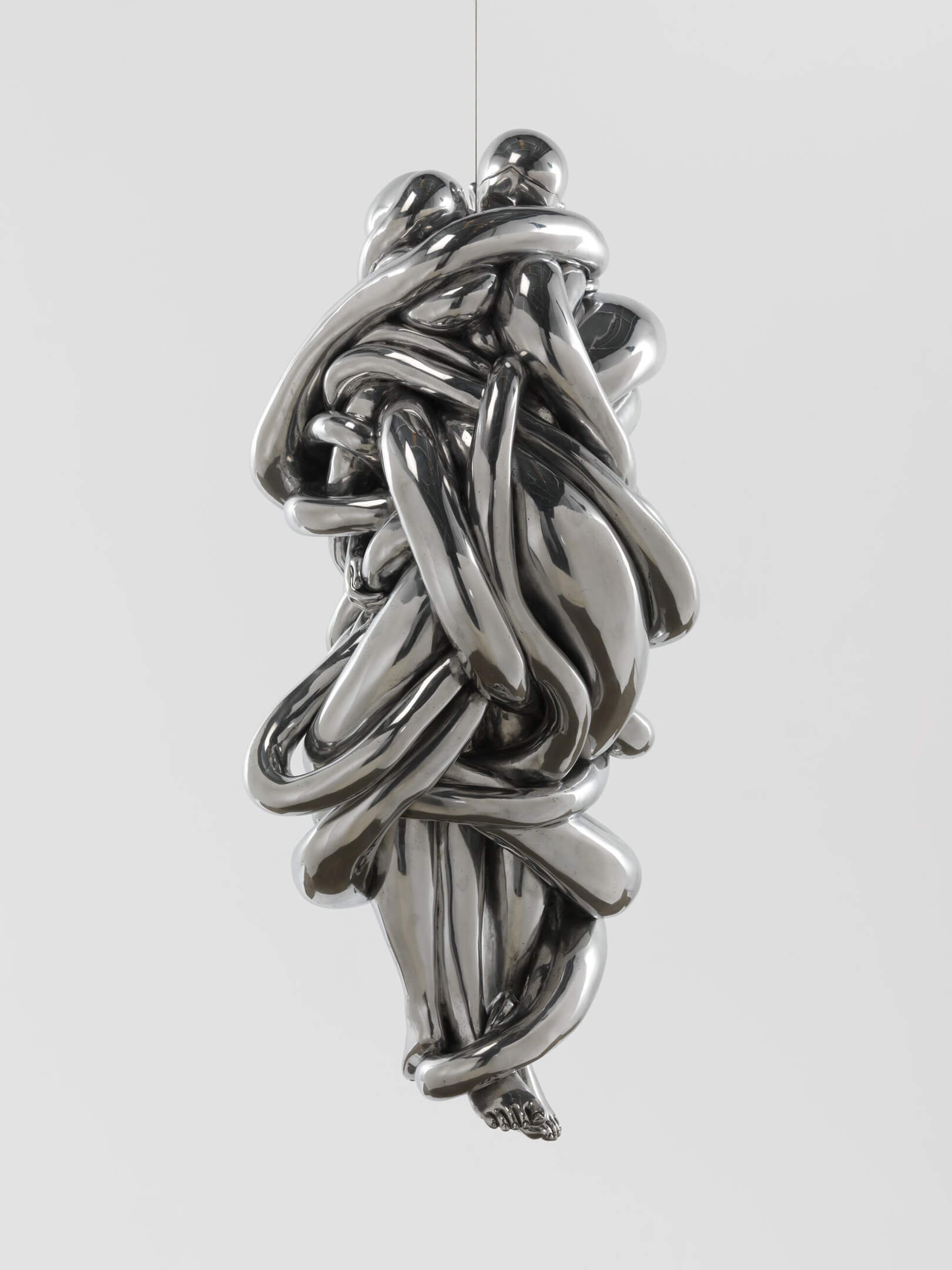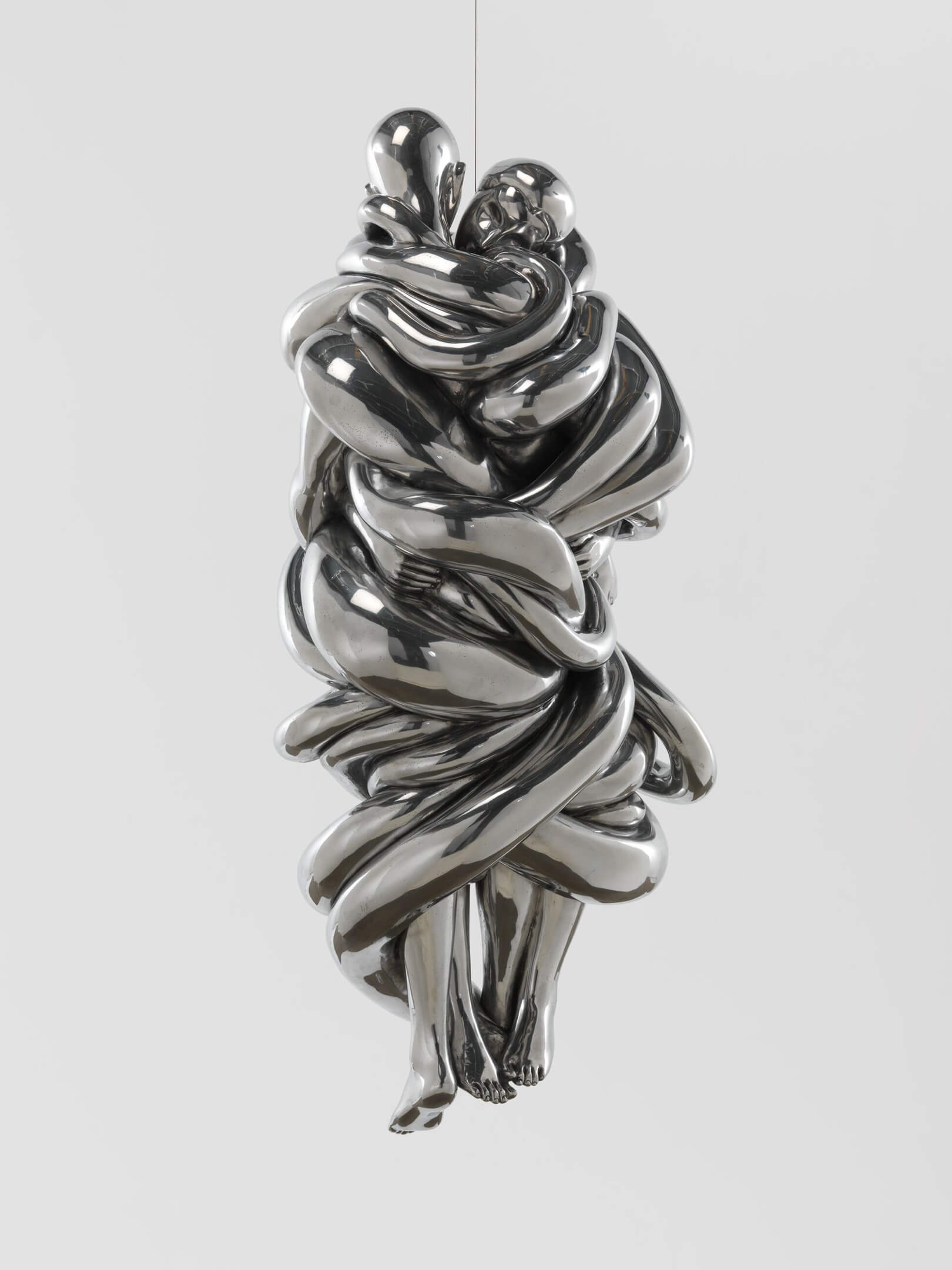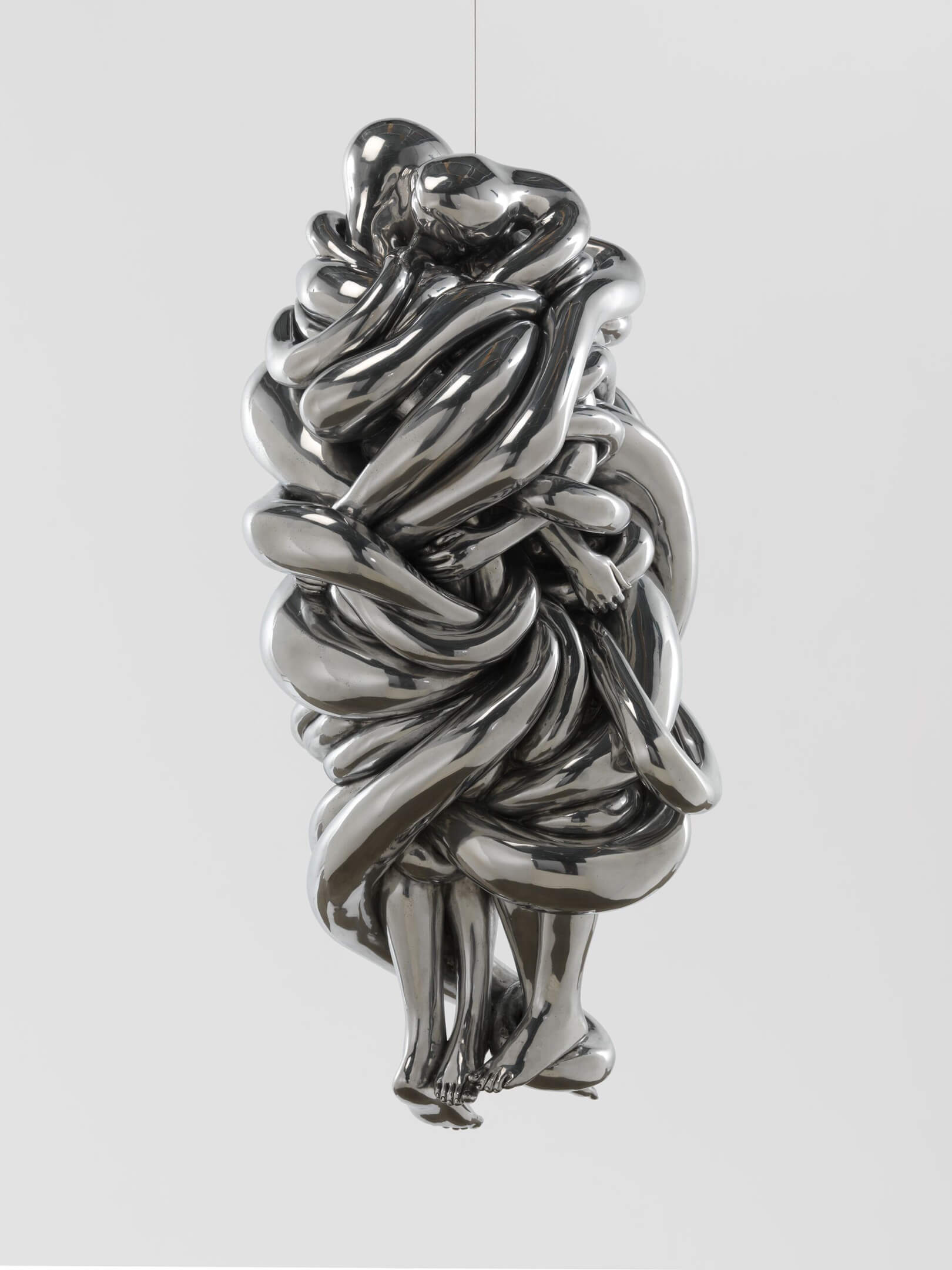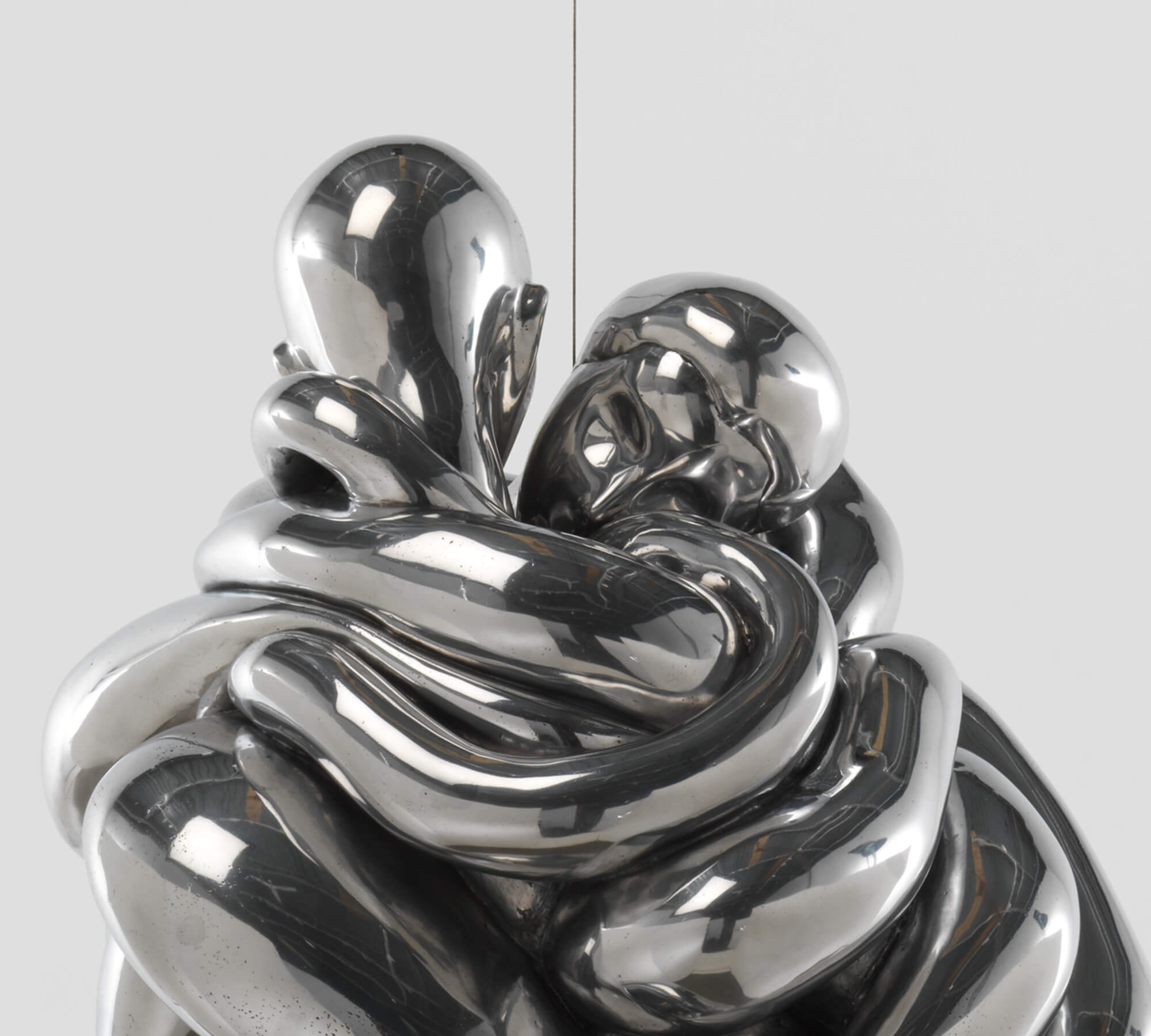
Louise Bourgeois
The Couple
The Couple
2007 – 2009 Cast and polished aluminum, hanging piece Edition of 6 + 1 AP 154.9 x 76.2 x 66 cm / 61 x 30 x 26 in
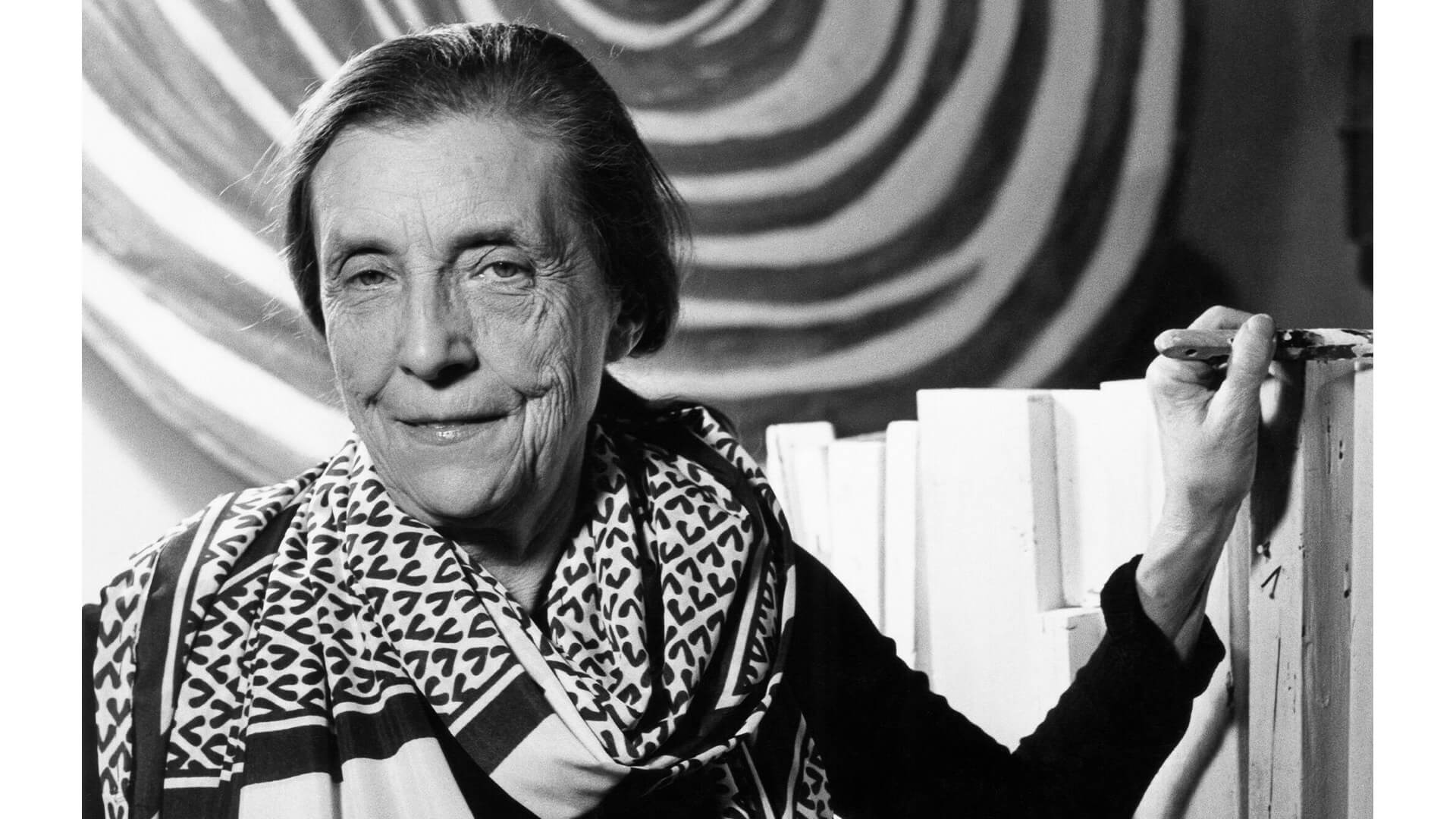
Articulated by recurrent motifs, personal symbolism and psychological release, the conceptual and stylistic complexity of Louise Bourgeois’ oeuvre is deeply affecting. While the artist’s visual imagery is highly personal and formed by particularly painful childhood memories and the fraught terrain of femininity, it also resonates on a much wider scale, conveying universal themes of emotion, anxiety and longing. It is this idiosyncratic approach to art making that positions Bourgeois among the most important and influential artists of the 20th Century.
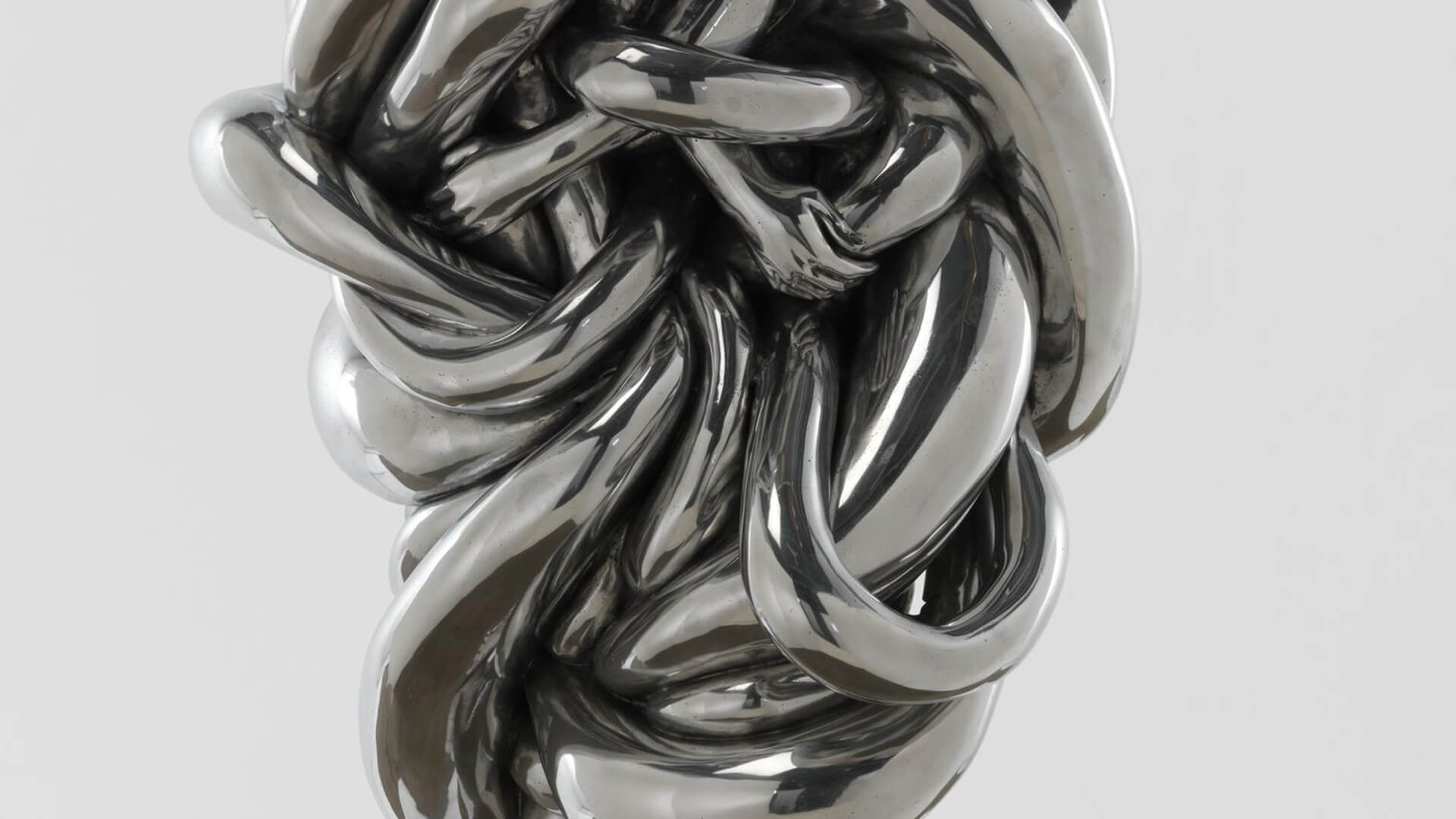
Two aluminum figures—one male and one female—tenderly embrace while dangling precariously from a string. They are fervently enveloped by a cocoon comprised of the female figure’s flowing hair, which covers all but their heads and lower legs. Spiralling high above the viewer, the pair revolves around one another, in a seemingly eternal state. Here, the biomorphic (albeit abstract) rendition of the encased couple resembles the anatomy of a human heart, alluding to the delicate nature of love and intimacy.
‘Behind Bourgeois’ iconography of entwined couples lies her powerful and lifelong fear of abandonment.’—Philip Larratt-Smith
Philip Larratt-Smith on ‘The Couple’
Philip Larratt-Smith has written and curated extensively on Louise Bourgeois and serves as the artist’s literary archivist. In spring 2021, he will curate ‘Louise Bourgeois, Freud’s Daughter’ at The Jewish Museum in New York, exploring the art and writing of Bourgeois through the lens of her relationship with Freudian psychoanalysis.

Addressing the complexities of human relationships, the couple is an enduring theme in Bourgeois’ oeuvre. While the subject first appeared in the artist’s work in the 1940s, it wasn’t until the 1990s that Bourgeois profusely developed the motif. Exploring the dichotomy between a need for love and a fear of abandonment—including physical and emotional dependencies—Bourgeois’ work reflects on the personal anxieties that overwhelmed her youth and that also preoccupied her as an adult.
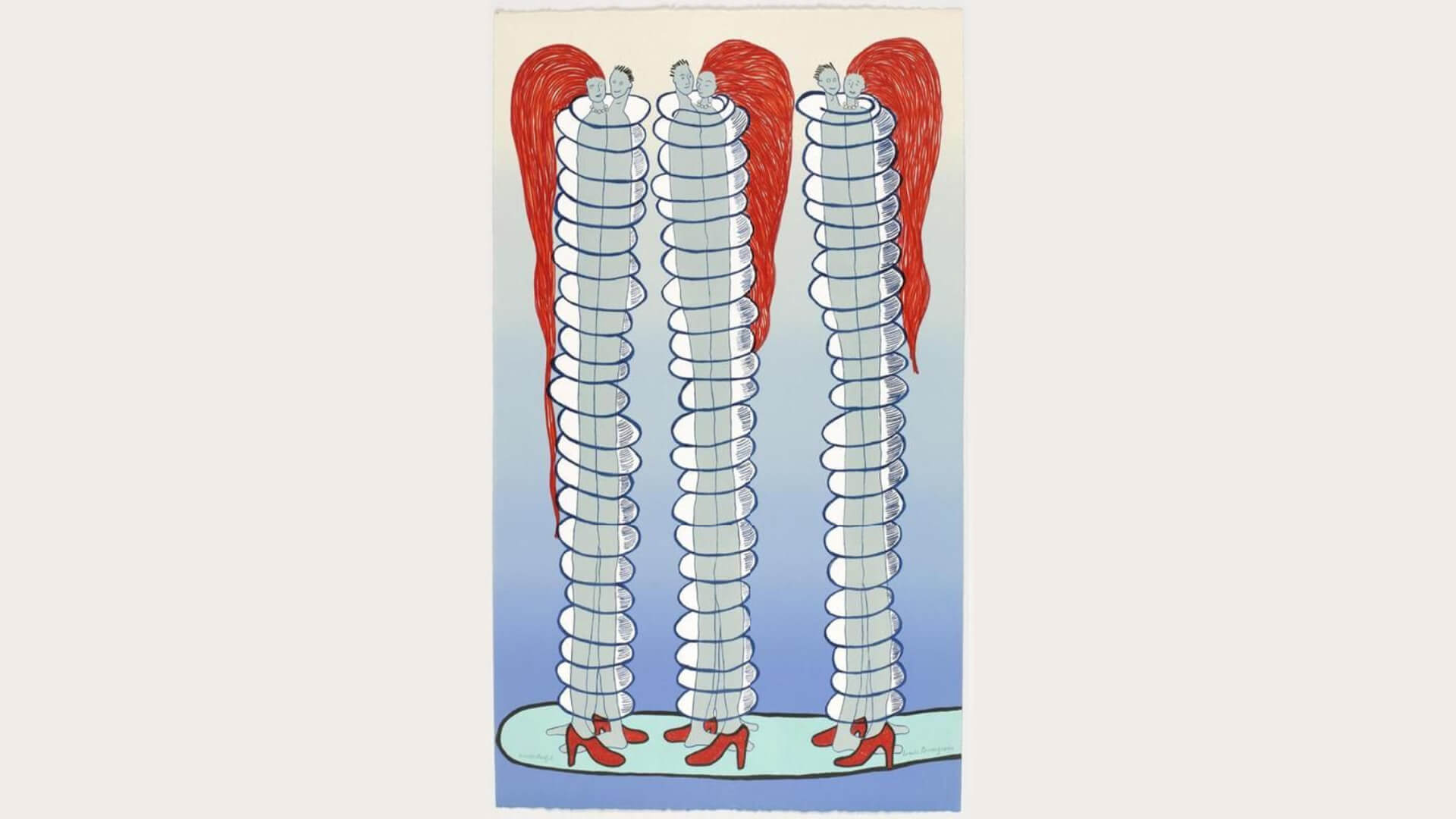
‘The Couple’ also speaks to Bourgeois’ meticulous investigation of abstract motifs and biomorphic formations, such as the spiral. Originating in her wood sculptures of the early 1950s, the spiral became a primary subject in her practice. Additionally, it appears in the artist’s plaster mounds from the 1960s and bronze figures of the 1980s as well as numerous drawings and prints. For Bourgeois, the spiral is illustrative of life’s eternal, natural cycle as well as a state of metamorphosis often associated with motherhood.
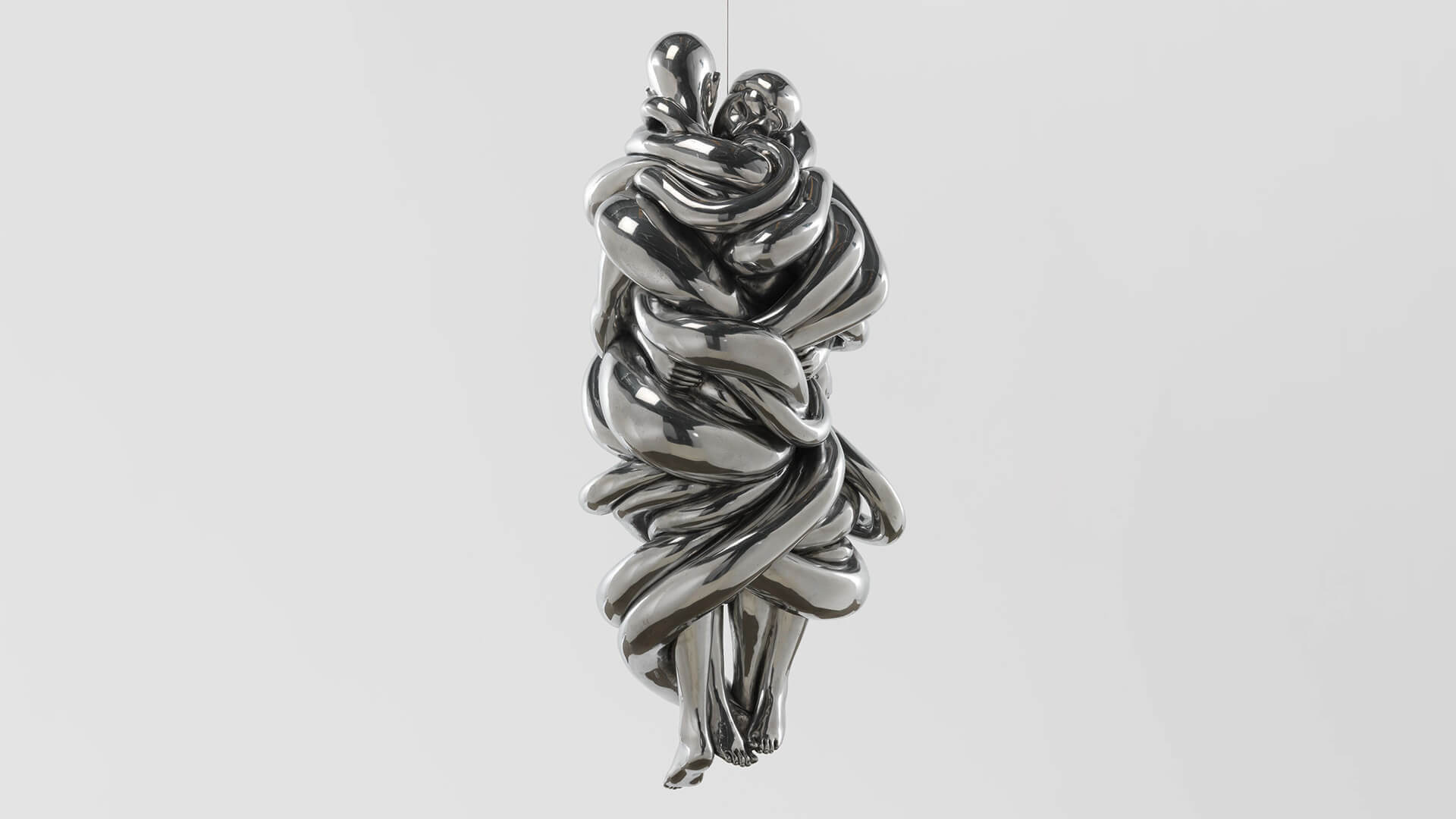
‘The Couple’ not only provides a reflection on the breadth of Bourgeois’ working practice—in particular, her everchanging innovation and contribution to the artistic process—but also sheds light on the subjects and narratives that underpinned her work throughout her career: familial relationships, sexuality and the body, as well as death and the unconscious. In the last years of her life, she perhaps approached a coming-to-terms with these themes in her works, of which ‘The Couple’ is an outstanding example.

On View in Gstaad
This winter in Gstaad, we bring together important sculptures and drawings by Louise Bourgeois at Tarmak22 in ‘The Heart Has Its Reasons.’ With works spanning from 1949 until 2009, this exhibition speaks about Bourgeois’ need for love, the ‘polar star’ she could not live without.
All images © The Easton Foundation / 2020, ProLitteris, Zurich. Images: Louise Bourgeois, The Couple, 2007-2009. Photo: Christopher Burke; Louise Bourgeois in 1978. Photo: Carollee Pelos / Art; Installation view of ‘The Couple’ (2007 - 2009) in ‘Phase III expansion, Building 6: Louise Bourgeois’ at MASS MoCA, North Adams MA, 2017; Louise Bourgeois, Couples, 2001; Installation view, ‘Louise Bourgeois. The Heart Has Its Reasons’, Tarmak22, Gstaad, Switzerland, 2020.
